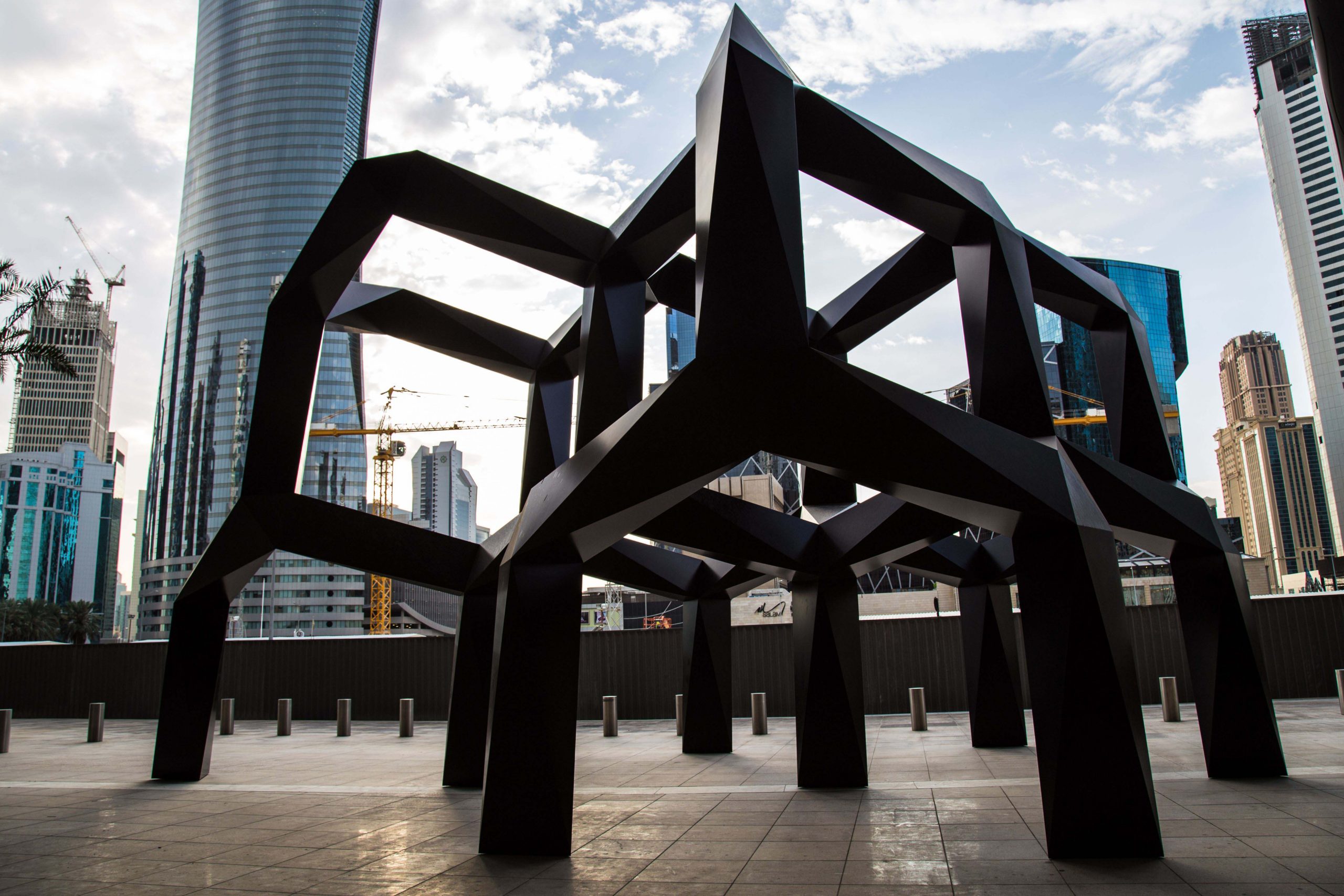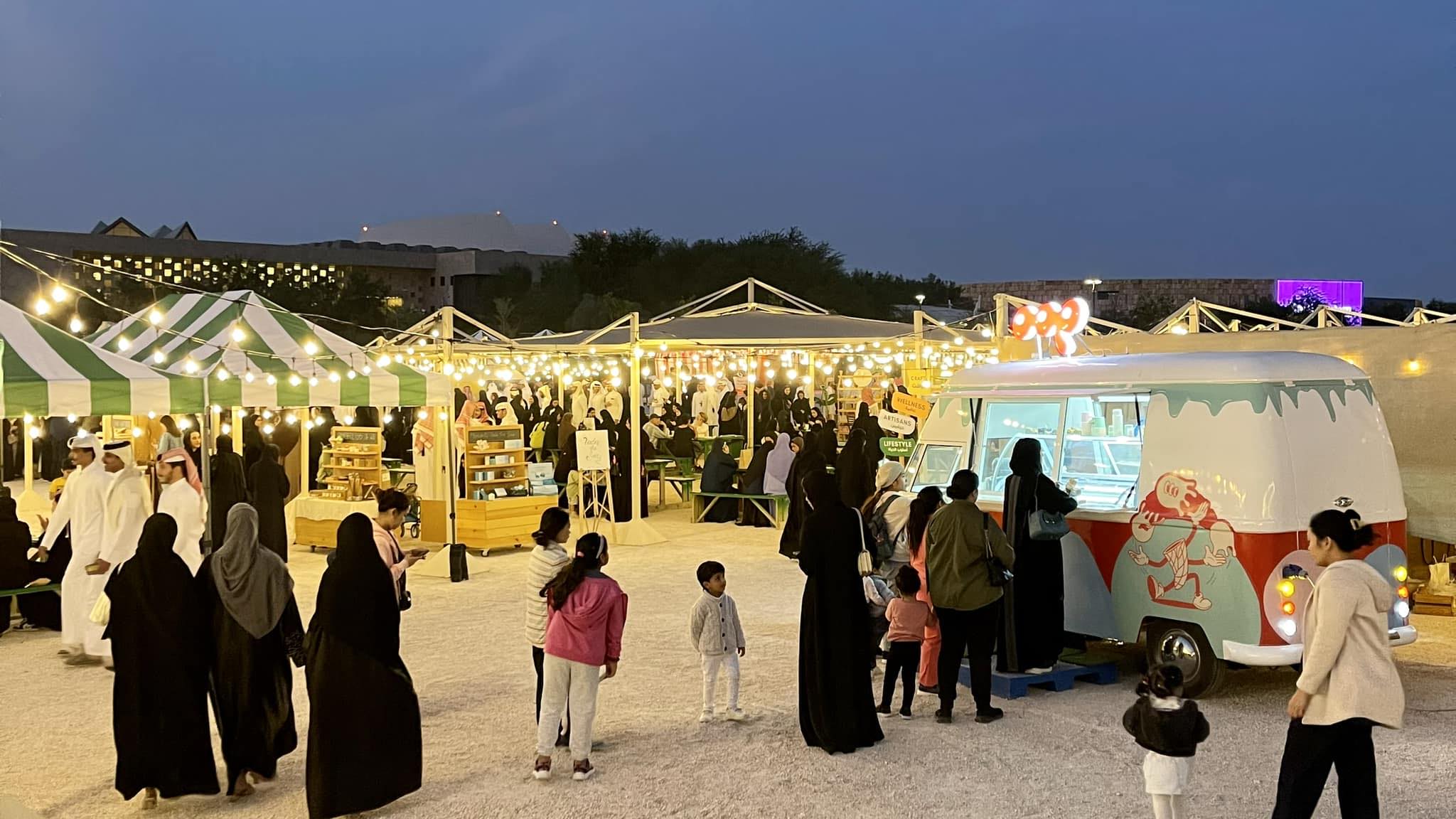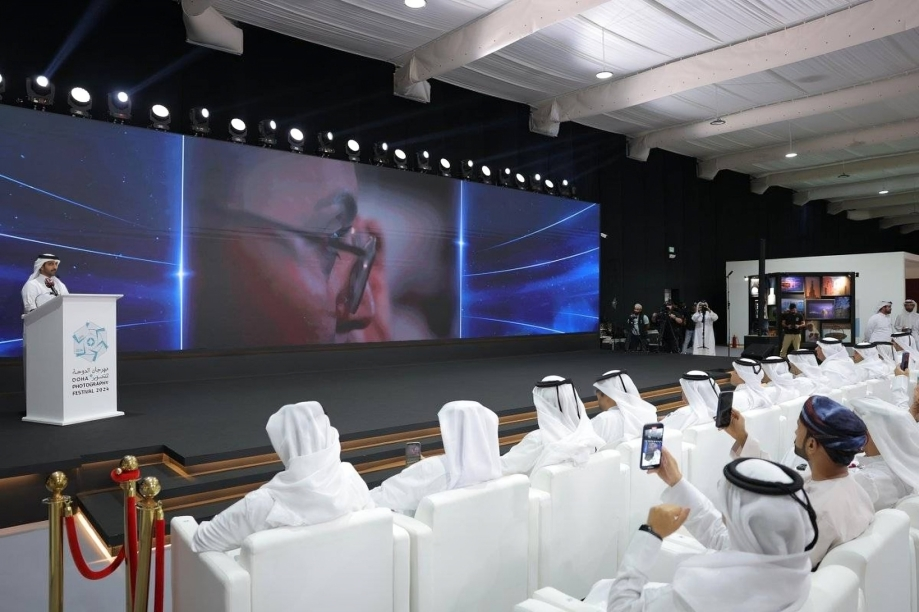
Qatar’s latest piece of public art, a new 24-foot-high black geometric sculpture, has just been unveiled outside the recently-opened Doha Exhibition and Convention Center (DECC) near City Center mall.
Titled “Smoke,” the two-tier aluminum installation was designed in 1967 by American artist Tony Smith, who created more than 50 large-scale artworks during the 1960s and 70s.
Smith’s work has appeared in collections in leading galleries across the world, including the National Gallery of Art in Washington, DC; the Museum of Modern Art (MoMA) in New York, Humlebaek in Denmark and the Kröller-Müller Museum, which is in the Dutch city Otterlo.

Located at the entrance to the DECC in Dafna/West Bay, the sculpture is structured around geometric shapes, including five tetrahedrons and 45 extended octahedrons, Qatar Museums said in a joint statement with Qatar Tourism Authority (QTA).
“The sculpture’s powerful form was based on the artist’s fascination with geometry and the morphology of organic shapes like crystals and honeycombs. ‘Smoke’ is a celebration of the triangle – the base unit, which creates a strong and dominating sculpture,” QM continued.
Origins
Smoke was originally built from plywood for cost reasons in 1967, but was recreated in metal some 25 years after Smith’s death in 1980 to go on display at the Los Angeles County Museum of Art (LACMA).
Acclaimed architect Renzo Piano designed the museum’s Ahmanson Pavilion specifically to show off the sculpture.
It was on loan from Smith’s estate for two years before the museum managed to raise what is believed to have been several million dollars, thanks to a donation from the Belldegrun family, to buy the work in 2010, according to the LA Times.
At the time, the LACMA director Michael Govan said: “What I can say is that the sculpture is insured for over $5 million, but the estate made a significant discount to us because they thought it was a good idea to keep it in Los Angeles.”
Smoke was a key attraction at the Los Angeles County Museum of Art, where it was installed in 2008 at the museum’s Ahmanson Pavilion and was loaned to LACMA.
Qatar apparently has a different edition of this work, whose current value is unknown, as QM does not publicly discuss the prices of its acquisitions.
@LACMA Tony Smith "Smoke" sculpture is editioned (1/3), so Qatar's newly acquired one is another https://t.co/hYZ9YBCW7o
— Christopher Knight (@KnightLAT) December 7, 2015
Public art
Mansoor bin Ebrahim Al Mahmoud, acting chief executive of Qatar Museums, said in a statement he hoped the artwork would “inspire local talent and will be something for everyone to enjoy.”
“This magnificent sculpture is part of our vision at Qatar Museums to bring world class art to Qatar and enrich the lives of all those who live in and visit our country. The work of Qatar Museums is all around you – in parks, at the DECC, at the airport, at hospitals, even in the desert – as well as in our museums,” he went on.
Smoke is the latest in a series of public art sculptures acquired by QM, some of which have attracted controversy.
In January this year, to mark the upcoming 24th Men’s Handball World Championships in Doha, QM unveiled larger-than-life sculptures of hands reaching for the sky.

Situated outside the Lusail Multipurpose Hall, the art works are called “The Challenge 2015” and were created by Iraqi artist Ahmad Al Bahrani.
Hamad International Airport also features a number of sculptures and statues, including:
- Lamp Bear by Swiss artist Urs Fischer;
- Oryx sculptures by Dutch artist Tom Claassen and a playground by Tom Otterness; and
- A desert horse sculpture by Qatari artist Ali Hassan.
QM’s public arts department also had a hand in the installation of Damien Hirst’s enormous bronze statues in front of the Sidra Medical and Research Center, which are currently under protective wraps; and Adel Abdessemed’s famous head-butt statue of two fighting footballers on the Corniche.
After a public outcry, these were moved and are currently in storage at the Museum of Arab Modern Art (Mathaf).
Parking at DECC
Starting tomorrow, the new DECC will roll out a pay-for-parking plan, officials said in a statement.
While sections of the facility’s underground carpark, which can accommodate nearly 3,000 vehicles, are reserved for organizers and visitors, the remaining spaces had been open to the public for free since the exhibition center launched last month.

However, starting Monday it will be regulated and security personnel will be onsite around the clock to monitor and secure the parking lots, DECC officials said, continuing:
“Our various service offerings are now open to both event organizers, their visitors and the general public and as such we needed to provide a secure, controlled and convenient parking solution to everyone who wants to use the facilities that DECC now offers.”
Speaking to Doha News, a convention center spokesperson said that due to the facility’s location opposite to City Center mall in the financial district, many shoppers may want to use its parking facilities.
The parking fee for visitors or the public will be:
- Q5 for the first two hours to accommodate quick visits;
- Q5 for each additional hour for the next three hours; and
- QR10 for each extra hour for a maximum of QR150
Those who lose their tickets or don’t pay will be fined QR150.

Attendees arriving by vehicle could be dropped off on the south side of the DECC, where there is space for some 200 taxis to queue, so they don’t need to pay for parking, while the north side of the building directly opposite City Center mall is allocated for exhibitors to load and unload supplies.
DECC is also offering a number of parking spaces that can be rented by individuals, companies and local government departments on a monthly or long term basis at “very competitive rates,” the statement said, without specifying the rates.
It added that the availability of these types of parking spaces is very limited.
Thoughts?







